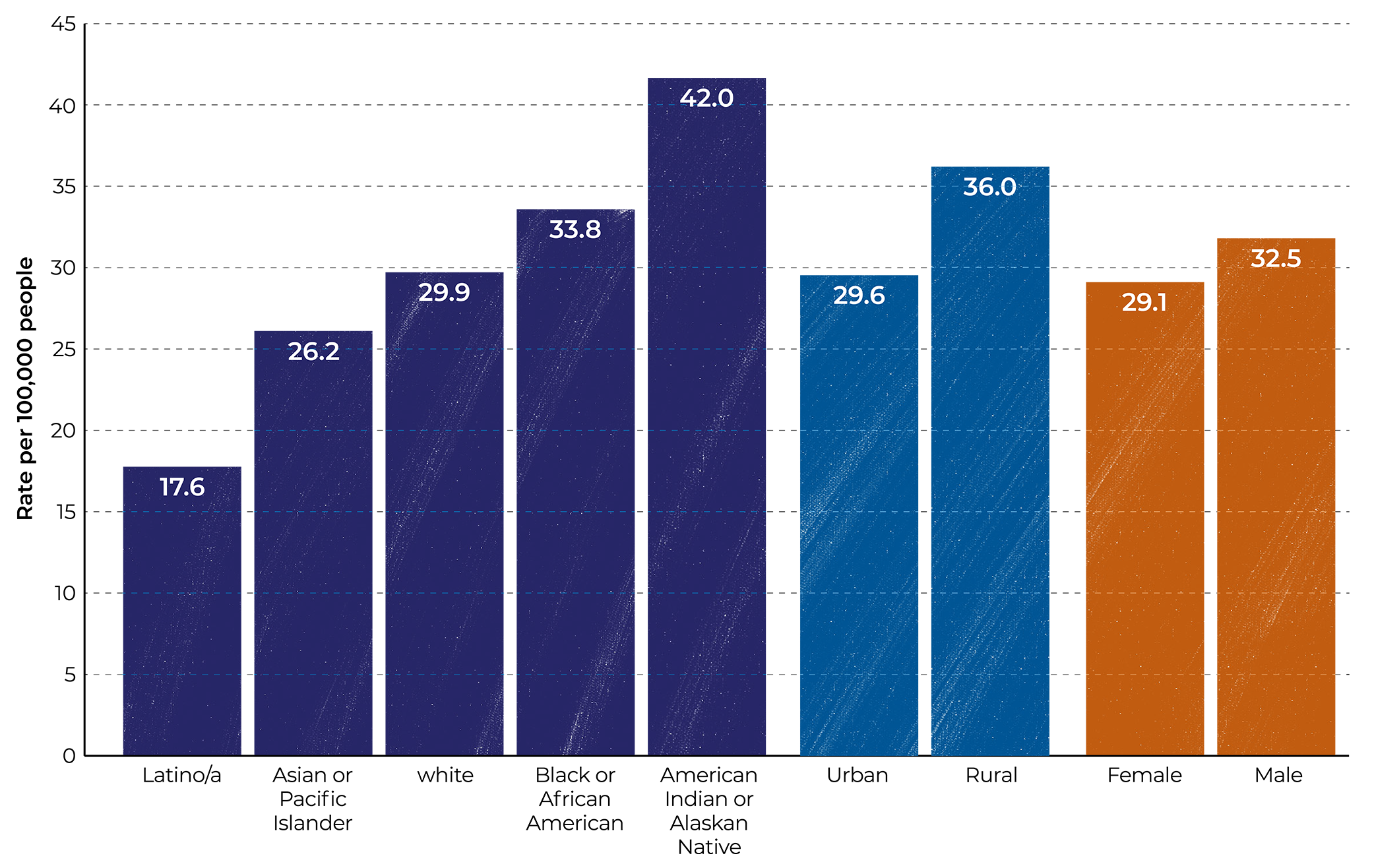Below you’ll find colorectal cancer data as of Spring 2024. Not all groups have the same rates of colorectal cancer screening, diagnosis, and mortality in Oregon, which shows that health inequity exists in many communities and areas of our state. See our Health Care Providers page for education and outreach material for specific communities.
Oregon data
Find current data
To find current and more in-depth data around colorectal cancer, visit Oregon Health Authority’s Chronic Conditions and Chronic Conditions Risk Factors Data page and Oregon Health Authority’s Cancer Data portal.
Key numbers
4
In Oregon, colorectal cancer is the fourth most common type of cancer diagnosed and the fourth leading cause of cancer death.¹
666
In 2022, the number of people living in Oregon who died from cancer of the colon and rectum was 666.²
1,629
In 2021, the number of people living in Oregon diagnosed with cancer of the colon and rectum was 1,629.³
45
In 2021, the national guidelines for colorectal cancer screening changed. It is now recommended that people start screening at age 45 instead of 50.⁴ As of March of 2024, Indian Health Service changed its recommendation for non-Latino/a American Indians and Alaskan Native people to begin colorectal cancer screening at age 40 instead of 45.⁵ This shift to younger screening recommendations mirrors preliminary data in Oregon, which shows that colorectal cancer is being diagnosed at younger ages in our State.
Key charts
Note: Use caution when interpreting these data. Race and ethnicity are not biological classifications, they are social ones. As such, there are significant differences between groups. These significant differences between groups reflect present-day and historic exclusion from opportunities for health, which begin where we live, learn, work and play.
Who is getting colorectal cancer in Oregon⁶
2021 Age-adjusted new diagnosis (incidence) rate of colorectal cancer per 100,000 people by race and ethnicity, urban/rural, and gender (lower is better)
Who is dying from colorectal cancer in Oregon⁷
2021-2022 Age-adjusted colorectal cancer death (mortality) rate per 100,000 people by race and ethnicity, urban/rural, and gender (lower is better)
Who is getting screened in Oregon⁸
A benchmark and goal for colorectal cancer screening rates was established by the National Colorectal Cancer Roundtable initiative “80% in Every Community”, which sets a national goal for colorectal cancer screening rates of 80% or higher for everyone. Using 80% as a goal, here is how different communities in Oregon are doing.
Age adjusted percent of Oregon adults age 50-75 who have had recommended colorectal cancer screening by race and ethnicity, urban/rural, and gender (higher is better)*
*Notes: Because of data availability, data includes ages 50-75 and does not yet include the revised current guidance of screening starting at age 45. Non-Latino/a is abbreviated “NL”. Race and ethnicity data is from 2016 to 2019. Pacific Islanders are not included in this data due to a small sample size. Rural and urban data is from 2016 to 2019. Male and female data is from 2020.
This data is reported from the 2021 age-adjusted cancer incidence rate from the Oregon State Cancer Registry and 2022 age-adjusted Oregon Public Health Assessment Tool (Oregon Death Certificate data). According to the United States Centers for Disease Control and Prevention United States Cancer Statistics: Data Visualization page, colorectal cancer is fourth most common cancer site diagnosed by rate and the fourth most common cause of all cancer deaths by rate. Other sources may use other methods of data reporting which can change this ranking. For instance, some sources use counts, not rates, which reflect that colorectal cancer is the second most common cause of all cancer deaths. Data can be reported in many ways, and none of the examples above are incorrect.
Oregon Health Authority’s Cancer Data portal, April 1, 2024.
Oregon Health Authority’s Cancer Data portal, April 1, 2024.
U.S. Preventative Services Taskforce, (2021, May 18), April 1, 2024
Indian Health Service. (2024, March 4). Cancer Screening Recommendations. U.S. Department of Health and Human Services. https://www.ihs.gov/ihm/sgm/2024/cancer-screening-recommendations/
Oregon Chronic Diseases Data Portal, May 31 2024. Note: Rural and urban was a custom run in SEER*Stat using RUCC county groupings.
Oregon Public Health Assessment Tool (Oregon Death Certificate data).
Oregon Chronic Diseases Data Portal, April 1, 2024




